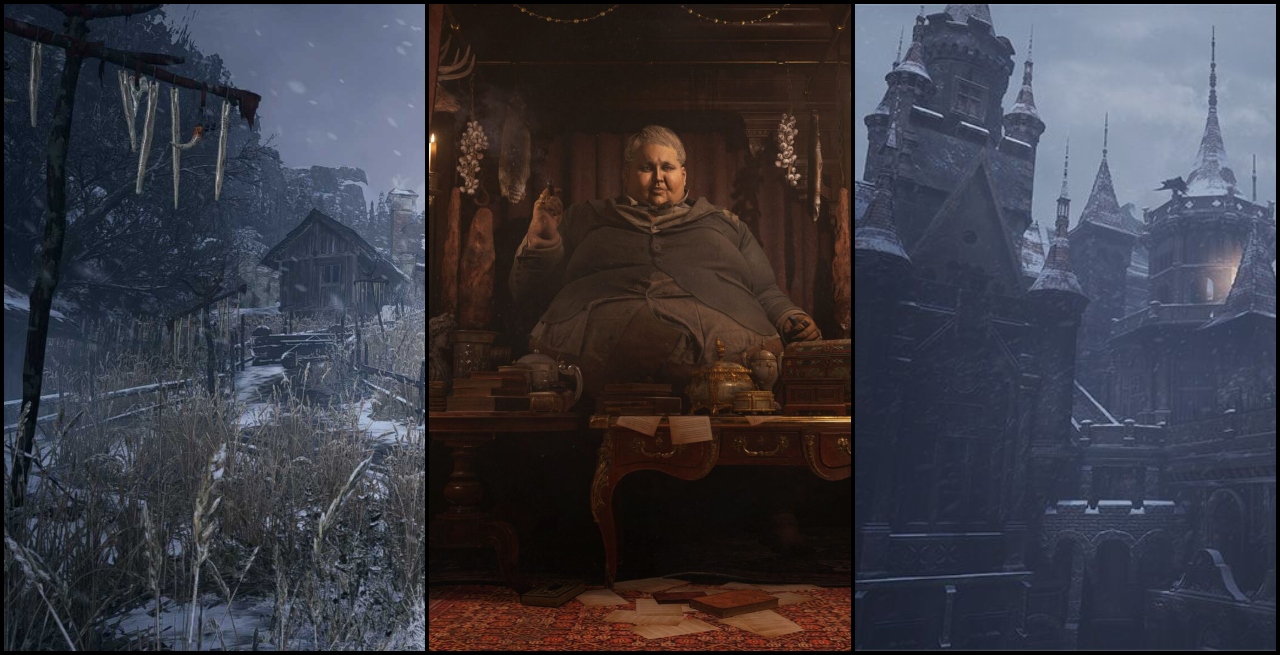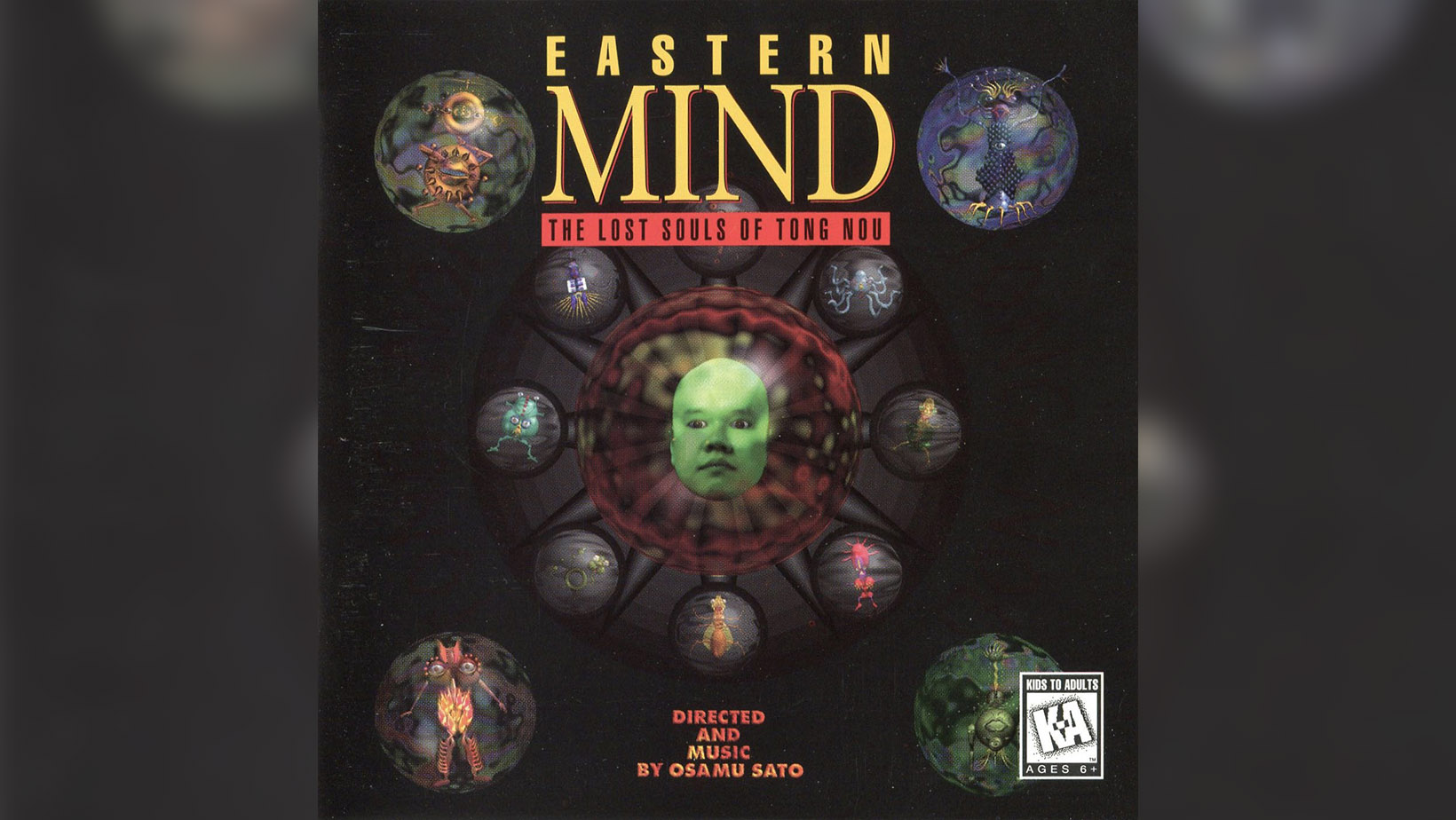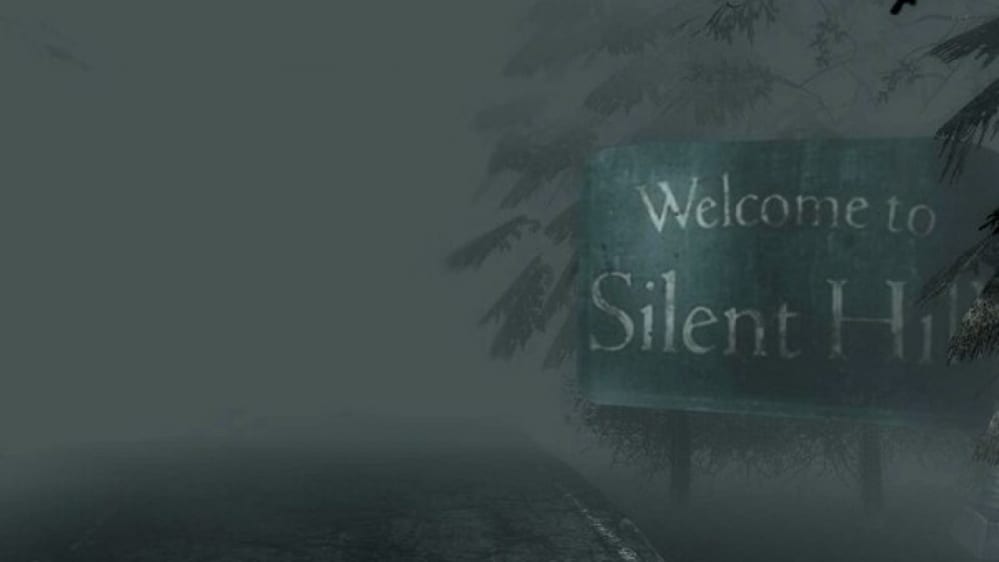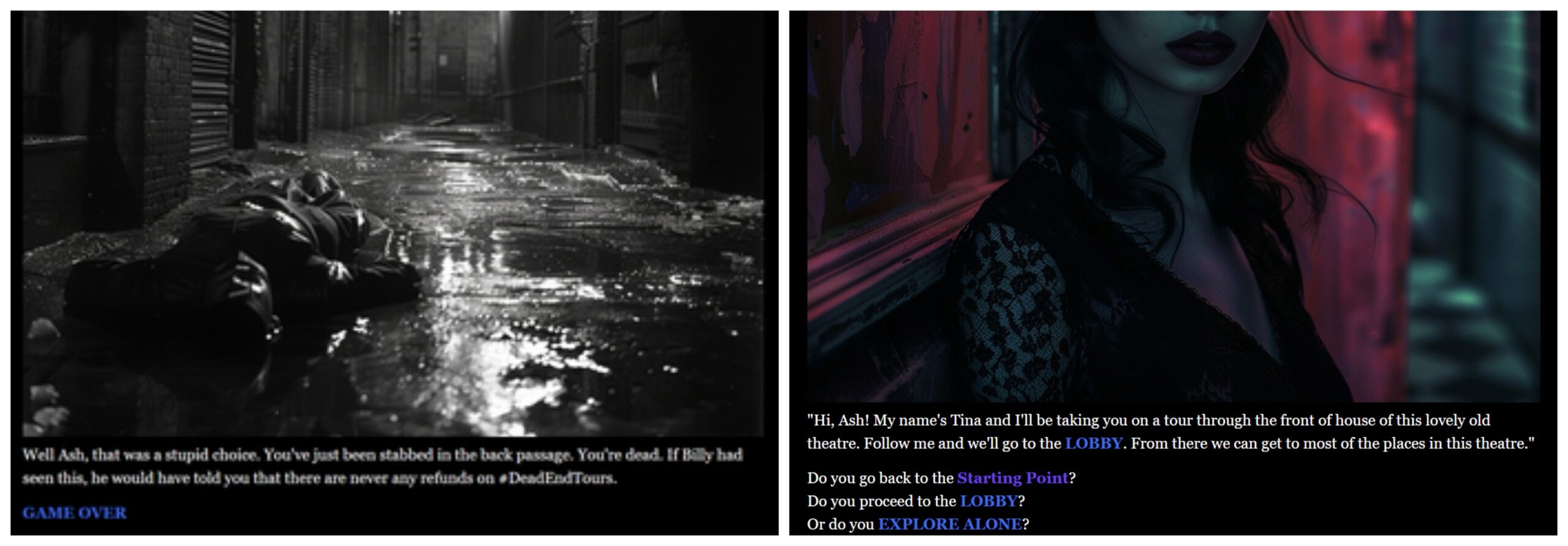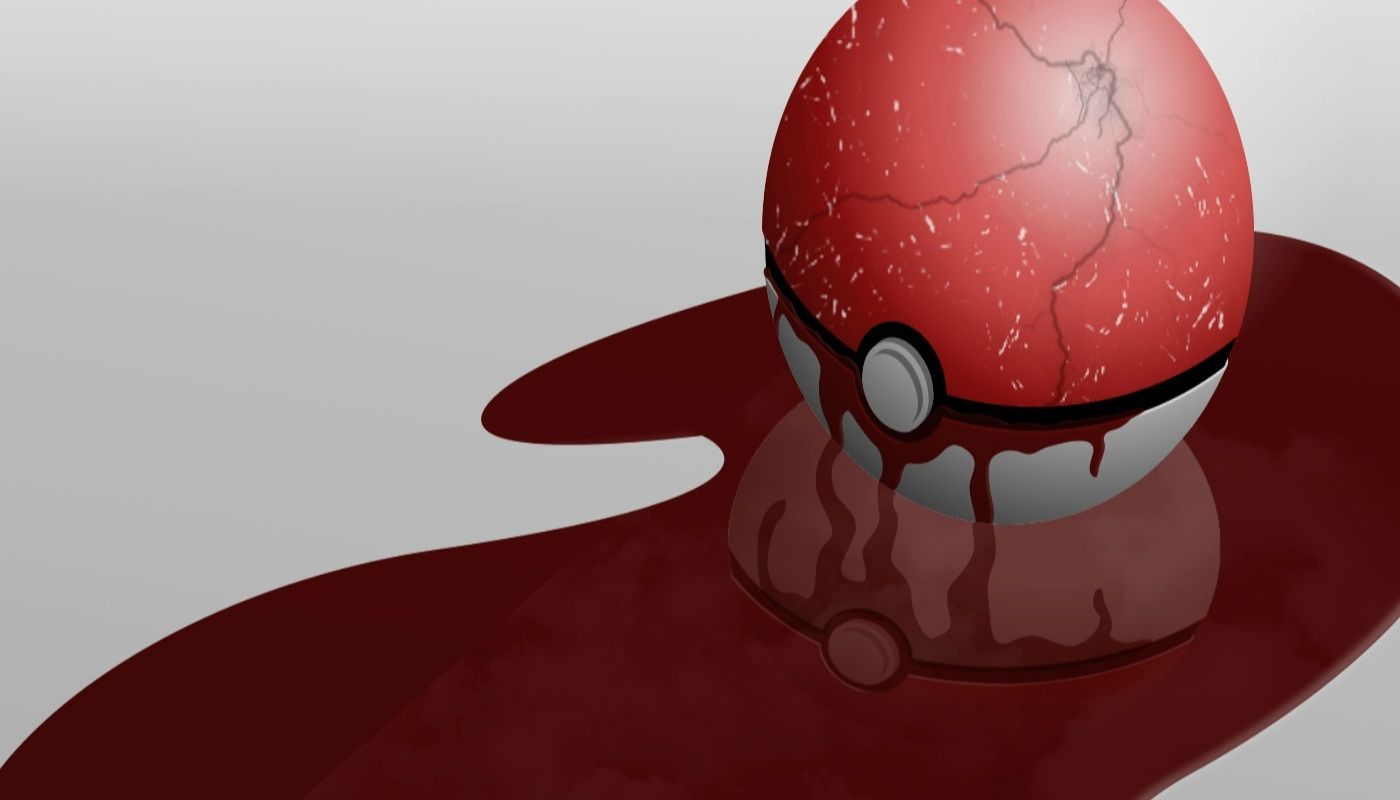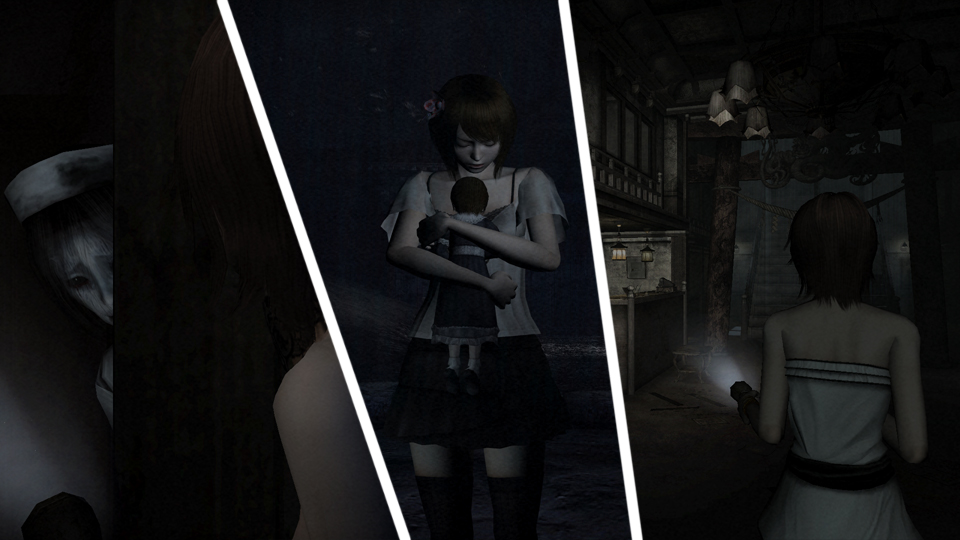
Zero: Tsukihami no Kamen [零〜月蝕の仮面〜], or Zero: Mask of the Lunar Eclipse, was the fourth main entry in the Zero series and a switch from Sony’s platform to Nintendo’s. For the sake of clarity, it is worth mentioning that the series goes by different names depending on where it is released. In its native Japan it is known as Zero; in Europe, Project Zero and the US, Fatal Frame. For the purpose of this review, I’ll be referring to it as Zero: TnK.
I don’t have particularly extensive experience with the series, I played to completion, as well as across New Game + modes, Zero: Crimson Butterfly [2-Remake] & TnK on the Wii. I also played some of the original PS2 release of Zero: Crimson Butterfly. It has though given me the experience with both camera and control styles present in the series which helps when explaining an overall recommendation. We’ll get to that in due course, but given Zero as a series’ relatively niche standing, I do think it is worth going over some of the basics of the series and what to expect.
Depending on which game you are playing, you’ll either be controlling characters from fixed camera perspectives [as in the earlier Resident Evils], or from an over the shoulder view [later Resident Evils]. For the most part you are defenceless as you are assailed by angry or vengeful spirits, aside from the Camera Obscura that will allow you to capture and pacify those same spirits. The captured “spirit energy” is then converted into points to be awarded, which can be subsequently used to modify and improve the camera, its lenses and to purchase film [the kind that goes in cameras – some people have forgotten that is a thing] and other items to aid the player.
As a series, Zero is largely set in the 1980’s and onwards. The lack of technologies that we take for granted now can be something of a point of contention for some players, the reliance on analogue devices and physical film, for example, can cause confusion in a world of omnipresent camera phones with readily available information. It is quite fitting, though, in terms of an economy of limitation and the restrictions on the player that make an horror and/or survival experiences thrive. It is also interesting to note that a “camera” in its own right lacks the power to be an effective weapon against the spirits that are encountered, only the creations of Dr. Kunihiko Asou – the Camera Obscuras or similar are capable of such a feat. The utilitarian and readily disposable nature of goods, but in particular electronics and the consumer’s relationship we have with them that exists currently would lessen the likelihood of the existence or creation of such a specialised item. Zero is a series that acts in some ways as a love letter to the recent and distant past, while still being fearful of its actions and legacies. It is not an overt action or mind-set, but one that is more inferred, I think.
To some extent, characters within the series carry across entries, but each unique issue does have its own narrative and central threat to act as a motivation. The world is focused but does still realise that events carry on outside of its immediate concerns. For some, the overriding need is to return to that world outside of the pain and anguish that our playable characters find themselves within, particularly in the case of Zero: Crimson Butterfly. As with real life, however, our insular worlds and external ones have a tendency to collide and complicate matters. Zero: TnK is an excellent example of the past and the present colliding, causing legacies and actions to spill across peoples’ lives.
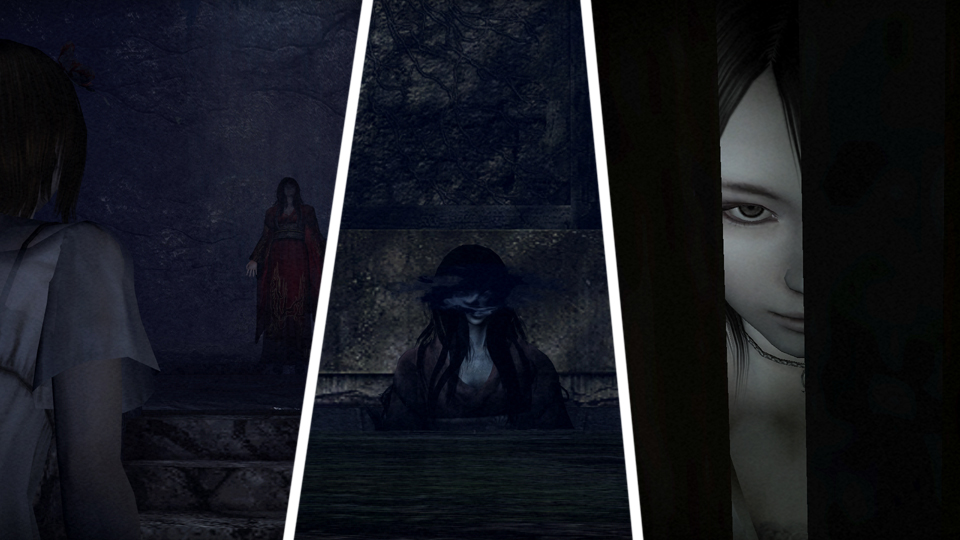
Another point of interest, particularly given the identitarian-based focus of social politics currently, is the dominance of female characters in games that predate this social focus. Initially, the choice was made to focus on female playable characters due to a perceived greater sensitivity to spiritual phenomena and as a commentary on the less overt, less physical violence that is present within the game, at least in that which is carried out by and against the player. The narratives themselves of the games are rife with some truly horrific actions carried out with great physical force. Regarding the Zero titles now in a climate of identitarianism, it makes it harder to celebrate its efforts and identity due to perceived injustices, unfair assumptions and categorisations. So, let’s not…
Let us instead recognise the achievements and flaws of the series, its considerations and choices as deliberate efforts to best deliver a story and experience. A calculated and considered approach that showed thought and care in its design over tokenism and a blind dive into the darkness of an endless pit. There was enough of that in Crimson Butterfly after all.
The Zero series has a quiet confidence about them, which while admirable in its rigid determination and confidence towards and regarding its own identity, does to some extent raise questions about the lack of inroads for interested players that maybe can’t quite pierce its shroud of expectations and dynamics. If you are, however, prepared to make the effort, you’ll find an experience that while not unique (there have been attempts to copy or pay tribute to Zero’s style and mechanics, Dreadout in particular), it is both rewarding as an initial experience and interesting within the wider context of game development and genres.
There is a dirty secret that I have hidden in the decaying cupboards of a remote mountain village or abandoned island hospital as well. I, for the most part, played this through the Dolphin Emulator using a Wiimote for control before the current official release. Given the number of crashes (some unavoidable in certain circumstances) on the Wii and reduced quality of sound and visuals, it was a no-brainer. It is important to mention to those reading this that if you at the end decide to experience this game, you may be in for a headache or two until now with official availability (THANK YOU, Koei Tecmo). Originally, Zero: TnK never received a release outside of Japan for a long time, but fans salvaged this with a fan translation and the game itself could legally be imported. The site that originally hosted this translation, as well as a number of other goodies is unfortunately as of May 2017 offline, but it is still mirrored and available. Fortunately, this convoluted and arduous process is no longer necessary – Fatal Frame fans have the opportunity to easily and properly experience this from the 9th of March, 2023. Has it been worthwhile, however, for the wait?
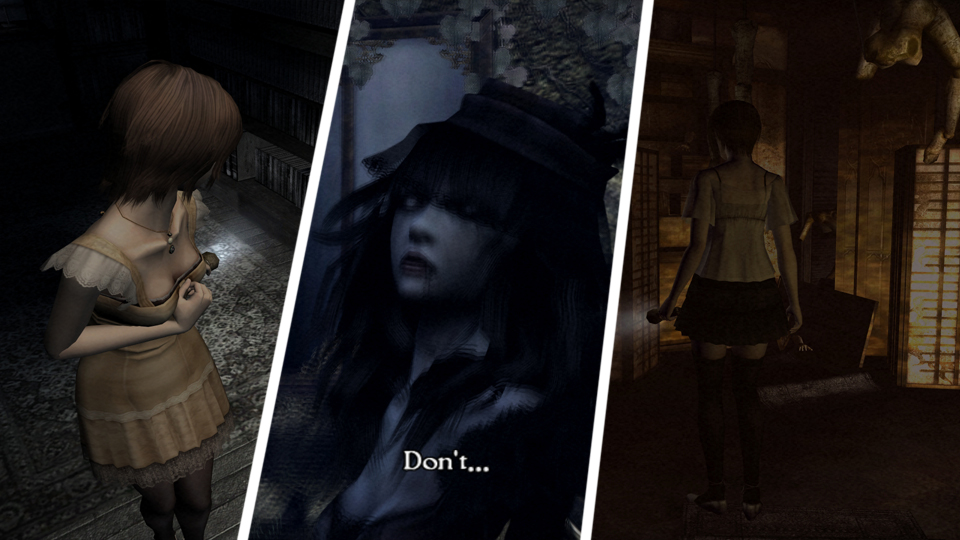
Zero: TnK is, at its heart a game about developing as an individual and as part of a group, moving on, and finding peace within yourself and others. There are a number of intertwined characters and narratives, some more surprising than others and some given short development and others running through the game as though an artery. As you move through this web, you’ll perhaps be more struck by the sense of loneliness than that of horror; then again, maybe in its own unsettling way that loneliness is a horror in its own right, the isolation of circumstance and actions leaving their own scars.
Where the first Zero title was set within an abandoned mansion, Zero: Crimson Butterfly (2) was set within Minakami Village, and Zero: Shisei no Koe (lit. “Voice of the Tattoo “; The Tormented/3) took place in the “Manor of Sleep” as well as making use of previously featured locations in the series. Mask of the Lunar Eclipse gives us entirely new locations to visit: the Hospital, Lighthouse and surroundings of Rougetsu Island.
Zero: TnK is something of a departure for the series in that it features thematically and functionally more contemporary locations, places that lack some of the previous period settings and features – not to mention the associations and atmospheres or expectations that accompany them. We switch the creepy haunted house for a museum, a windswept and isolated mountain village for the looming figure of a lighthouse. The choice of a hospital, though likely to be sneered at in certain quarters, fits the narrative well, assisting and supporting the game efforts in creating a sense of place and atmosphere. Within the range of the series, it provides a little variety – if not within its genre as a whole.
As the player controls the various characters and progresses through the story, they will open up more areas of the location in a gradual and sensibly paced progression. This is done at such a rate that the player is given the time to become familiar enough with a setting in a way that allows them to almost become comfortable with it. There is a corridor with a locked door, eventually, it and the area it restricted become accessible. We may have walked that corridor multiple times, but while we recognise it, we are not so familiar with it that we can become complacent, or feel entirely safe. This is the needle that Zero: TnK neatly threads, keeping the player in a state of suspense, almost to the point that they desire conflict and engagement as a way of breaking the tension and isolation, loneliness existing as its own malevolent impression on the players mind and the setting we are inhabiting.
While having numerous randomised encounters would have been one way to raise and release this tension – and the game does feature some unexpected encounters – this more minimalist approach turns the focus away from conflict and its expectation, towards the player actively moderating their own behaviour – a subversion of instinct and expectation. They know that they encountered a spirit in this corridor and they defeated it. By rights, the area should be safe now. If something has changed though, a door unlocked, or action taken in another area, following in the footsteps of someone previously; does that then change the events that would happen or be revisited in this area? Will it no longer be safe? Gradually you piece together the story of what took place on the island. You develop an instinct for what is likely to happen which sometimes the game will entertain and in others subvert. It uses the language of expectation of events to keep you unsettled in a way that I found more effective than a conveyer belt of encounters, all seeking to outdo one another in grotesqueness or shock value.
That… is how a harmless spirit, in a quiet corridor manages to be more frightening than a wailing and tortured spirit, that is out for your blood.
Actually fighting the spirits though, is something that bears scrutiny in its own case. The control options afforded by the Wii are a reasonable match. The opportunities provided by the Wii U and the tablet controller for Zero: Nuregarasu no Miko [Black-Haired Shrine Maiden/Maiden of Black Water/5] almost convinced me to purchase the console, who knows… maybe one day. Back to Zero: TnK, though.

While the presumably most likely control method would have been to use the IR sensor and have the direction the Wiimote is pointed, control the direction of the camera… that wasn’t to be the case. Instead, the tilting and twisting of the Wiimote controls the direction of the player’s torch when exploring. Within the environment, items of importance, that when having the torch shone on them, are highlighted and become possible to interact with. Movement is controlled primarily with the analogue stick. A sidestep/strafe function is enabled with the C button on the Nunchuk and the Z button enables running, or to be more accurate, a sluggish jog. The third person perspective while a dramatic departure from previous entries in the series’ fixed camera angles allows for spirits to more readily sneak up on the player from behind. The less abstract perspective also goes some way toward furthering the connection between the player and the playable character. When they are alone we are. We don’t need to see them surrounded by space from an oblique angle. We are already inhabiting that space with them.
The B button raises and lowers the Camera Obscura/Spirit Flashlight and A activates it. There is a lock-on function that can be enabled and it is possible to move around with the camera raised. The tilt/twist functions of the torch are carried over into the fine-tuning of aiming the camera, these I found to work less well when under pressure of conflict, compared to using a torch during exploration. Switching of lenses and films is done via the d-pad and given the layout of the Wiimote is a reasonably compact and convenient way to play the game.
There is limited use of the IR pointing for the playing of pianos in the game and the Wii’s much-derided “waggle” gameplay does make a contextually fitting appearance with the need to shake off the attacks from spirits in some instances by unsurprisingly, shaking the Wiimote. For the most part, these controls do well enough. A little more speed and responsiveness would have been appreciated but again, for the most part it bumbles along reasonably well.
In an attempt to control the pacing and to exaggerate the hesitation and perceived fragility of the playable characters, the opening of doors takes place at a reduced pace. There is a slight difference in the relative speeds of movement between the game’s three female playable characters and the sole male character. The stances also give the impression of greater confidence on the part of the male character. I would have liked a little more variety, perhaps based on context of situation; if every door is approached as though in fear, even if you’re going backwards and forwards through the same door it does start to grow a little tiresome.
It is not just doors, but the picking up of objects that have this slowed motion. A hesitancy towards reaching out makes sense, particularly given the spirit hands that will, at random, reach out and grab the player, then need to be shaken off. But when the character shows little concern, [perhaps they’re bolder than others] yet their movements are still slowed – then the human brain and its ability to notice discrepancies in motion has a little switch that is flipped when it sees this and the carefully maintained illusion of the world takes a hit and is damaged. When this switch is continually tripped then the overall atmosphere becomes victim to one thousand cuts.
This ability of the mind is used to its best effect though with the slightly warped movement of spirits. We are unnerved by it, we recognise it as “not correct” and added to the atmosphere that was created we feel a sense of unease and fear. I do feel though that the developers went slightly too far in the limitation of the efficiency of movement for the playable characters. The range of motion required to fully elevate or depress the camera, the sluggish running speed. Thematically they make sense, but over an extended period of play become nuisances that can ever so slightly pull the player out of the experience with each moment of advertised irritation they cause.
A more successfully included feature though was the “quick turn”. By quite aggressively flicking the Wiimote or Nunchuck it is possible to have the character make a sharp 180° turn, one that while fast, still has a note of fearful clumsiness to it. The adjustment of the player’s view doesn’t quite match the speed of the turn and supports the feeling of being disjointed, in a state of fear. Much to my amusement and perhaps in a telegraphing of Koei Tecmo’s involvement, is the exaggerated boob and butt physics that will also be activated by this movement. To expect anything else from the publisher/developer of Dead or Alive would be folly, shoehorn in an unlockable Samus Aran Zero-Suit [Nintendo going back to the well again] and you have a wobbly treat that fits the game as well as an assault rifle that fires kittens would, don’t even get me started on the Mario and Luigi costumes…
The integration of the Wiimote’s speaker however left more to be desired. If you take the time to poke and pry through the game’s menus you’ll find a variety of things to read and look at. Collected notes, maps, photographs – these will all be kept and are useful in helping you on your way through and understanding the game’s plot. On a New Game + file you’ll also have the option of reviewing ghost portraits, accompanied by a short biography for each one which was a thoughtful inclusion. Saved albums of images taken with the Camera Obscura can also be made and stored. The reason for mentioning the integrated speaker is that it is utilised in the playback of phone messages, of which there will be a number that are encountered throughout the game. The quality of the sound is awful and manages to be worse than that of a period [1980’s] telephone. Other audio recordings will playback through the game’s standard audio output whether you are playing on the Wii or via emulation software. I am yet to find a way to listen to the phone recordings that doesn’t require the Wiimote’s built-in speaker. In an attempt to further create atmosphere and tone by replicating a style of period technology they only ended up creating further irritation, much better would have been a post-process filter on the audio files and to have played them back through the default audio output.
In a title that puts a quiet emphasis on its story, care has been taken to help keep the player focused and provided with enough information throughout so as to not lose their place within the narrative. Text recaps are provided at the beginning of chapters and given the game’s tendency to shift control of characters, it helps to maintain consistency and understanding of where you are in the narrative course. Much as with Silent Hill or Resident Evil, the dialogue box descriptions of items and features in the world are present. The flavour text that goes in these boxes has a more personal feel to them, faint tinges of regret and loneliness, imparting the voice they are communicated with and a further effort towards consistent world-building.
It is a shame therefore that the game can be gone through in quite a short time; It took me around fourteen hours on the first playthrough, mostly due to my own incompetence, and down to under six hours for subsequent New Game + runs. All the care and attention went into the creation of the setting and it is something of a whistle-stop tour. You’re never really there long enough to become fully enveloped within it. Yes, there would be a risk of becoming overly familiar, but with the wealth of possibilities for narrative and character exploration, it did seem a missed opportunity and a chance that would have been worth taking – being able to learn more about the inhabitants of Zero: TnK’s world and the tragedy that befell them. There is an argument that could be made in that; more detail than is necessary would complicate the central motivations of the game, and distract from the imperative. I think that it does an injustice though to the player to assume they are incapable of processing the information they are provided and incapable of ranking it in terms of importance, association, and relevance. We are provided with tantalising glimpses of a series of narratives and events that transpired but left with little resolution or exploration of them on their own terms. All is swallowed up by the central focus and subservient to it. Given the personal focus that is provided by the multiple playable characters, this broad strokes approach conflicts with the attempts the game does make at raising the personal stakes and results in something of a dog biting its own tail that overall lessens the impact of the reveals and resolutions, particularly in the ending.
While Zero: TnK continues the tradition of Tsuki Amano providing the ending theme, in this case titled “Noise” it does come across as a rather hastily tied bow, together with the ending cinematic, attempting to briskly collect the threads that have been untangled and somehow neatly tie them together. Don’t get me wrong, the dramatic beats, tone, and presentation are all nicely done, coming after a rather hurried final “boss” encounter. The pacing suffers though given the featured piano-playing mini-game and its necessity as part of a revolving sequence depending on success or failure against the game’s primary antagonist. The game doesn’t seem to know whether it wants to maintain its hurried pace and intensity, to give time for reflection, or an absence of intention that is left for the player to fill. It’s another instance of the game having a minor identity crisis and a loss in confidence, which is all the more surprising given the strength of the preceding section where the player ascends the Tsukimori Lighthouse and the terrific, increasing in intensity music that accompanies it. I can’t help but wonder if an extended version of this ascent would have made a better conclusion than the showdown that we did receive. It’s worth noting though that I have little love for staged boss engagements however and a distinct bias against them.
I keep coming back to pacing as it really is one of the most puzzling aspects of the game. The selection of unlockable outfits and upgrade lenses requires three playthroughs of the game, the collectible Hozuki Dolls need to be located and photographs taken of them to unlock other features. The amount of backtracking and the review of files and recordings all take time. This is in conflict with the sense of urgency given the looming threat and the ever-present feeling of claustrophobia and impending fate that the game’s characters face. The narrative and characters feel underdeveloped for the time that is spent with it and them.
I think this is one of the marks that leads to the Zero series being a niche interest. Wandering spirits are present in the folklore of many nations, they are something of an international concept, a visual language that transcends borders and that can be understood and appreciated regardless of nation of origin.
Zero as a series and Zero: TnK has a reasonably good idea of what it wants to do; cute, young women in peril within haunted houses, taking advantage of international interest in Japanese horror and the folklore that informs it. Due to the lack of comparable titles that feature this exact combination, it exists in a niche that can afford to have the player meet it on its own terms. I think that has led to a level of complacency, however, where more rigorous focus and a less complacent taking for granted of audience loyalty in development would have been beneficial.
In the time that you do spend with Zero: TnK something that I hope will be apparent is how gently it has aged. Despite the relatively low resolution of its textures, the environments have a pleasing level of detail. Scaled up via an emulator it still looks good, the physics on clothing in particular giving a wonderful impression of delicate fragility as they sway and drift with movement. Lighting is soft enough to lure the player into its corridors and deep enough to hold enough malice to give the player pause to continue on their path.
Thematically, the game is based around the colours Blue and Yellow, taking inspiration from the moon. It is not as overt a colour signature as the Persona series for example but more subtly informs the menus and world. By not drawing attention to itself with such vigour, it allows itself to become a more harmonious part of a whole, particularly helpful when in the case of a user interface. There are perhaps a few too many steps required in accessing certain functions, though for the most part, the interface functions well. The most prominent black mark against the interface would be in the saving and viewing of photographs in the various in-game albums. That could certainly use some work in terms of explanation and accessibility. Really, if it is an option I would encourage you to run the game at a custom resolution through an emulator and use a screenshot capturing function, the results are far better than the game’s built-in functionality.
With the trend towards remasters and reissues this is certainly a title that for which I would appreciate seeing a multiplatform release, retextured, provided in a number of translations and unshackled from Nintendo hardware. There are points in the game where acting in a certain sequence makes a hard crash unavoidable. There are unrectified flaws with the ghost list and certain unlockable items also. To have these fixed would be beneficial and ought to have been done regardless for the initial Japanese release. There are mixed reports as to the reason why this didn’t take place, though the prevailing view seems to be one of Nintendo being cheap and refusing to fund Tecmo carrying out the patching work to the game for its initial release and subsequent international localisation and distribution, this and the reluctance of any other publishers to carry the title. Surprising when Zero: TnK is still currently the bestselling title in the series.
While Zero: Crimson Butterfly is the series entry that causes the fondest reminiscence and bashful, longing looks, it is Zero: Tsukihami no Kamen that I have put the most time into and regard most fondly. Its combination of the relatively contemporary as well as period in contrast to Crimson Butterfly provided a greater variety of settings. I’ve played it alone and with friends watching and participating. There is a mindset that horror is diluted by the participation or presence of others. If all parties concerned are invested and susceptible to that same influence then would it not stand that the effect is magnified as a minor group hysteria takes place? Zero: TnK works well in both forms as a participatory and passive experience. The story holds up well with an overall considered pace. The characters have enough space within them to have questions and answers that allows the player to become invested in them to an extent. The game will give back what is put into it. That requires effort, if you’re willing to give that time and consideration then the game ought to have something within itself for you.
The game even features something of a challenge/mission mode that caters to those that wish to play a simple haunted house and have perhaps neither the time nor the wish for an extended narrative. Zero: TnK makes allowances for its audience, it caters to them and allows them to wallow in a tailored fantasy. It doesn’t however look to strike out any further than that comfort zone and the arguable complacency that has been bred from that approach is not something that I believe is healthy in the long term for the Zero series as a whole.
For now though it is only necessary to look at the immediate, choices and decisions that resulted in Zero: TnK being made and its final form. I firmly believe the game holds up well, particularly as something of an underdog of the series, Crimson Butterfly’s less glamourous cousin as it were.
As a niche within a niche, it specialises to a risky degree, but within its stable it is a great game. Call that an 8/10 if you choose, stick to verbal descriptions if you prefer. Either way, I would encourage you to make the effort to try the game – now readily accessible for the first time ever and once thought impossible. Use the time to think what you would like to see in a continuance of the Zero series, make your voice heard and perhaps we’ll get some more entries in this unusual but quietly welcome series yet.
…Or perhaps not. In which case I would ever more eagerly encourage you to try this game, while we have the means to do so before it’s lost to time. Let’s face the moonlight and dance.
More Game Reviews
Resident Evil Village Review – Capcom’s Return to Form
Recovering from trauma caused by the Louisiana incident of 2017, Ethan Winters now attempts a peaceful life with his wife, Mia, and his newborn daughter, Rosemary, in the faraway continent…
An IOU (2022) Video Game Review – Romance is Horror
Authentic, genuine portrayals of love are difficult to come by on-screen. Almost as difficult to find as a visual novel without the usual anime-adjacent conventions. Like a good horror movie…
Eastern Mind: The Lost Souls of Tong Nou (1994) Game Insight – From the Mind of Osamu Sato
Hi fellow weirdos! Javi here again with another curious Japanese videogame of the early 90s. For those familiar with the fantastically oneiric LSD: Dream Emulator game, the Osamu Sato name…
Silent Hill 2020 almost confirmed. There was a source here, it’s gone now.
Silent Hill is potentially coming for 2020. An industry insider has disclosed an upcoming announcement for Silent Hill at a future convention we cannot legally mention, which may or may…
You’ve Never Experienced Horror Like This – Ashley Lister is Bloody Brilliant!
Choose Your Own Demise With Ashley Lister’s Novel Horror Concept UK horror author Ashley Lister likely needs no introduction to those of you who devour indie books like midnight snacks…
Pokémon CreepyPasta – Strangled Red
Straight Outta Kanto is aware that you freaks love nothing more than destroying treasured childhood memories. In fact, thanks to the advent of such perverse pastimes on the internet, new…
